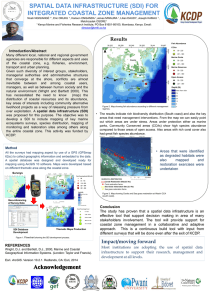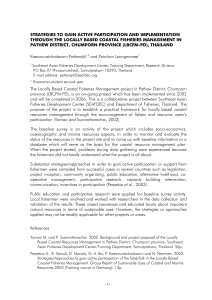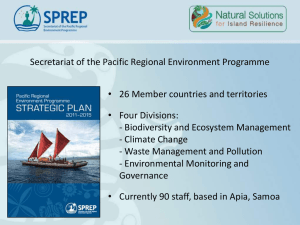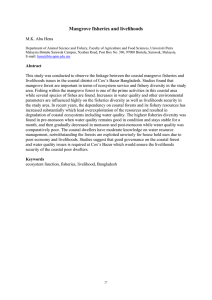A spatial data infrastructure (SDI) for integrated coastal zone management
advertisement
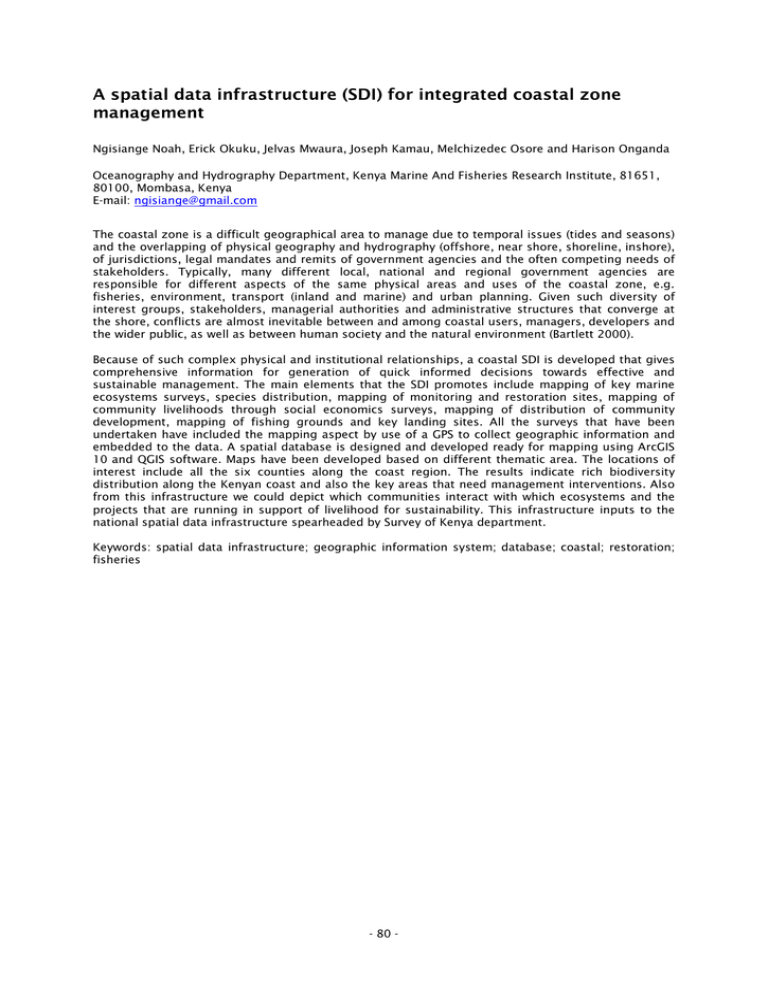
A spatial data infrastructure (SDI) for integrated coastal zone management Ngisiange Noah, Erick Okuku, Jelvas Mwaura, Joseph Kamau, Melchizedec Osore and Harison Onganda Oceanography and Hydrography Department, Kenya Marine And Fisheries Research Institute, 81651, 80100, Mombasa, Kenya E-mail: ngisiange@gmail.com The coastal zone is a difficult geographical area to manage due to temporal issues (tides and seasons) and the overlapping of physical geography and hydrography (offshore, near shore, shoreline, inshore), of jurisdictions, legal mandates and remits of government agencies and the often competing needs of stakeholders. Typically, many different local, national and regional government agencies are responsible for different aspects of the same physical areas and uses of the coastal zone, e.g. fisheries, environment, transport (inland and marine) and urban planning. Given such diversity of interest groups, stakeholders, managerial authorities and administrative structures that converge at the shore, conflicts are almost inevitable between and among coastal users, managers, developers and the wider public, as well as between human society and the natural environment (Bartlett 2000). Because of such complex physical and institutional relationships, a coastal SDI is developed that gives comprehensive information for generation of quick informed decisions towards effective and sustainable management. The main elements that the SDI promotes include mapping of key marine ecosystems surveys, species distribution, mapping of monitoring and restoration sites, mapping of community livelihoods through social economics surveys, mapping of distribution of community development, mapping of fishing grounds and key landing sites. All the surveys that have been undertaken have included the mapping aspect by use of a GPS to collect geographic information and embedded to the data. A spatial database is designed and developed ready for mapping using ArcGIS 10 and QGIS software. Maps have been developed based on different thematic area. The locations of interest include all the six counties along the coast region. The results indicate rich biodiversity distribution along the Kenyan coast and also the key areas that need management interventions. Also from this infrastructure we could depict which communities interact with which ecosystems and the projects that are running in support of livelihood for sustainability. This infrastructure inputs to the national spatial data infrastructure spearheaded by Survey of Kenya department. Keywords: spatial data infrastructure; geographic information system; database; coastal; restoration; fisheries - 80 -

